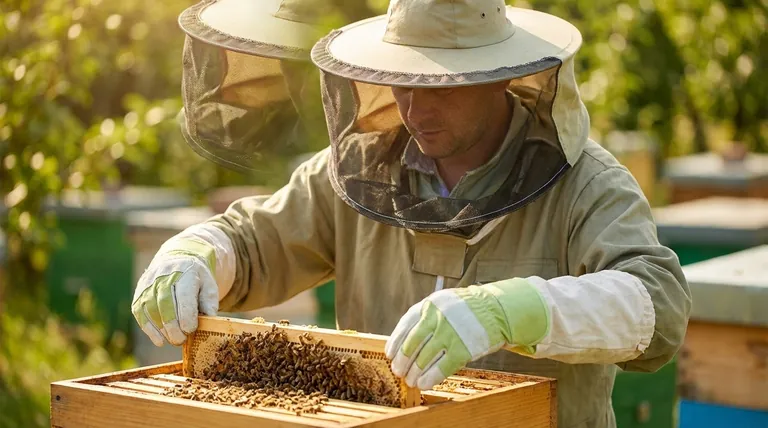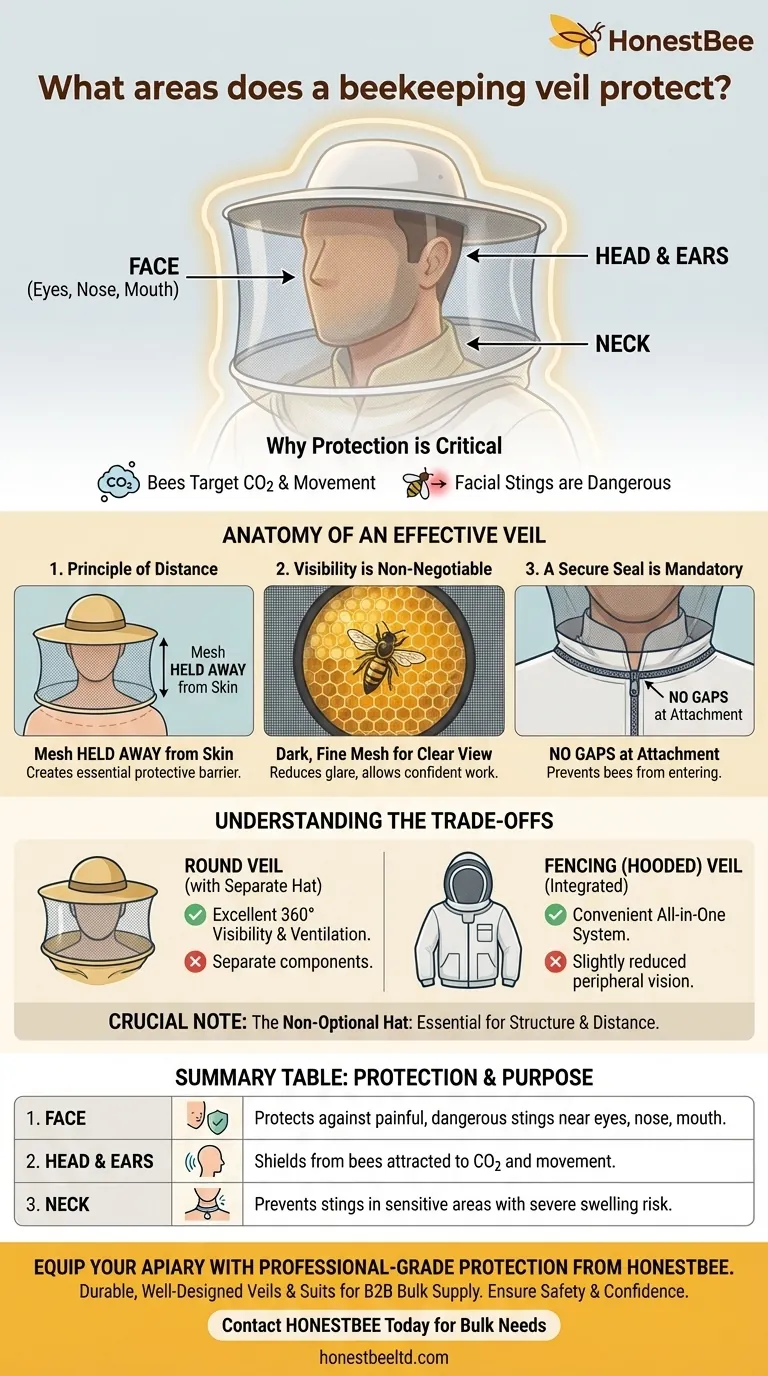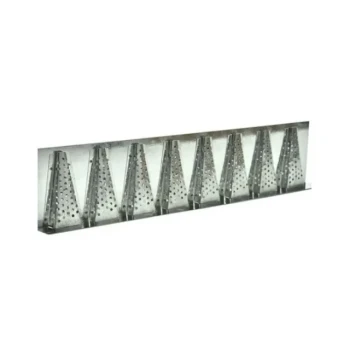At its most direct, a beekeeping veil protects the face, head, ears, and neck from bee stings. It is an essential piece of protective equipment designed as a fine mesh head covering that allows you to see while keeping agitated bees away from the most sensitive areas of your body.
The purpose of a veil is not just to cover your face, but to create a protective space around your entire head. Its effectiveness hinges entirely on its ability to keep the mesh screen away from your skin at all times.

Why Veil Protection is Critical
A veil is arguably the single most important piece of beekeeping safety gear. Defensive bees have specific behaviors that make protecting your head and face a top priority.
Bees Target the Head and Face
When honeybees feel their colony is threatened, they often target the perceived source of the disturbance. They are drawn to the carbon dioxide we exhale, which naturally directs their defensive response toward our faces.
The Danger of Facial Stings
Stings to the face, eyes, or neck are not only more painful but can also be more dangerous than stings elsewhere. Swelling in these areas can be more severe, and a sting near the eye or in the throat carries unique risks.
Anatomy of an Effective Veil
Simply having a mesh over your face is not enough. The design and structure of the veil are what provide genuine protection and usability during a hive inspection.
The Principle of Distance
The most critical feature of any veil is its ability to maintain distance between the mesh and your skin. If a bee lands on the veil and it's resting against your nose or cheek, it can still sting you. The best designs use a wide-brimmed hat or an internal wire structure to hold the screen rigidly away from your face.
Visibility is Non-Negotiable
A good veil should minimally impact your vision. Fine, dark-colored mesh is standard because it reduces glare and is easier to see through than lighter colors. Clear visibility is crucial for spotting the queen, identifying eggs, and working confidently within the hive.
A Secure Seal is Mandatory
An effective veil must attach securely to your bee suit or jacket with no gaps. Bees are experts at finding small openings, and a loose veil provides a dangerous entry point for them to get trapped inside with your head.
Understanding the Trade-offs
While all veils serve the same function, their design affects comfort, visibility, and convenience. The most common styles offer different benefits.
Round Veils
This traditional style is typically worn over a separate, wide-brimmed hat. It offers excellent 360-degree visibility and ventilation. The rigid structure of the hat ensures the mesh is always kept far from the face and neck.
Fencing (or Hooded) Veils
This style is often integrated directly into a bee jacket or full suit. It uses internal wiring to create a "fencing mask" shape that stands out from the face. It is less bulky but may have slightly reduced peripheral vision compared to a round veil.
The Non-Optional Hat
For any veil that is not self-supporting (like a simple mesh drape), wearing it over a secure, wide-brimmed hat is essential. This is what creates the protective space that makes the veil effective. A veil without this structure offers dangerously false security.
Making the Right Choice for Your Goal
Your choice of veil depends on your priorities for protection, comfort, and convenience.
- If your primary focus is maximum protection and visibility: A round veil paired with a separate, wide-brimmed hat provides the most reliable distance and an unobstructed field of view.
- If your primary focus is convenience and an all-in-one system: A jacket with a well-designed, integrated fencing veil is an excellent and highly protective option.
Ultimately, the right veil is one that allows you to work calmly and confidently, knowing your head is secure.
Summary Table:
| Area Protected | Purpose & Importance |
|---|---|
| Face | Protects against painful and dangerous stings near eyes, nose, and mouth. |
| Head & Ears | Shields from bees attracted to carbon dioxide and movement. |
| Neck | Prevents stings in a sensitive area where swelling can be severe. |
Equip your apiary with professional-grade protection from HONESTBEE.
We supply durable, well-designed beekeeping veils and full protective suits that ensure safety and confidence during hive inspections. Our wholesale-focused operations provide commercial apiaries and equipment distributors with reliable gear built for demanding use.
Contact HONESTBEE today to discuss your bulk supply needs and protect your beekeeping operations.
Visual Guide

Related Products
- Beekeeping Gloves Goatskin Leather with Long Cotton Sleeve for Beekeepers
- Mesh Ventilated 3 Layer Goatskin Beekeepers Gloves for Beekeeping
- Professional Galvanized Hive Strap with Secure Locking Buckle for Beekeeping
- 8-Cone Galvanized Steel Bee Robber Guard
- Versatile Ratchet Hive Strap with S-Hooks for Secure Fastening
People Also Ask
- What is the difference between cleaning cow leather and goat leather beekeeping gloves? Tailor Your Care for Longevity
- Why is dexterity and flexibility important in beekeeping gloves? Boost Your Hive Management Efficiency
- Why are protective gloves important in beekeeping? Boost Confidence & Safety in Your Apiary
- What are the advantages of goatskin leather gloves for beekeeping? Superior Sting Protection for Your Apiary
- What are the features of ventilated bee gloves? Stay Cool & Dexterous in Warm Weather



















